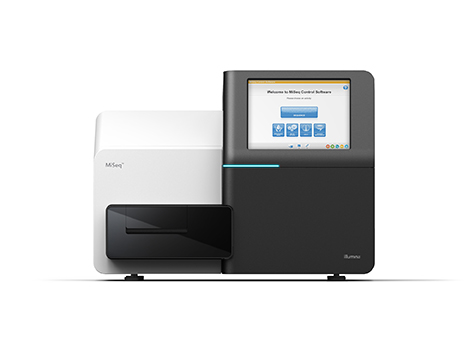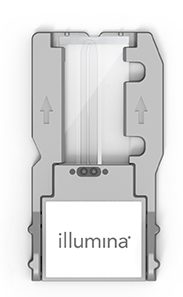MiSeq
A small scale sequencing instrument ideal for projects that require limited sequencing depth. Suitable for bacterial genomes, and targeted resequencing.

Yield: up to 10 GB
Reads per run: up to 18 M
Read lengths: up to 2 x 300 bases

1 lane flow cell
Library pools will be sequenced using MiSeq V2 or V3 reagent kits.
The selection of different reagents can be seen in the table below. The choice of reagent kit will depend on the required read length and the required output. NGI project coordinators will help you choose the best option for your project if you are unsure.
| Reagent type | Yield (clusters/lane) | Read length |
|---|---|---|
| MiSeq Reagent Kit v2 | Minimum: ≥10M Typical:12-15 million | 50 cycles (e.g. 1x50bp) 300 cycles (e.g. 2x150bp) 500 cycles (e.g. 2x250bp) |
| MiSeq Reagent Kit v3 | Minimum: ≥18M Typical: 22–25 million | 150 cycles (e.g. 2x75bp) 600 cycles (e.g. 2x300bp) |
| MiSeq Reagent Kit v2 Nano | Typical: 1M | 50 cycles (e.g. 1x50bp) 300 cycles (e.g. 2x150bp) 500 cycles (e.g. 2x250bp) |
Quality scores:
- Greater than 80% of bases above Q30 at 2 × 50 (or shorter) bp
- Greater than 75% of bases above Q30 at 2 × 100 bp
- Greater than 70% of bases above Q30 at 2 × 150 bp
- Greater than 60% of bases above Q30 at 2 × 250 (or greater) bp
Minimum yield in the table above is what we guarantee if the libraries have passed our quality controls. Typical yield is based on what we get from most of the common library types made by us or by illumina, but this can vary from case to case.
There will be a certain variation in yield between samples in a library pool (made by NGI) depending on variations in pipetting and concentration measurements. NGI will accept a variation of +/- 25% between samples in a pool.
Last Updated: 22nd January 2024